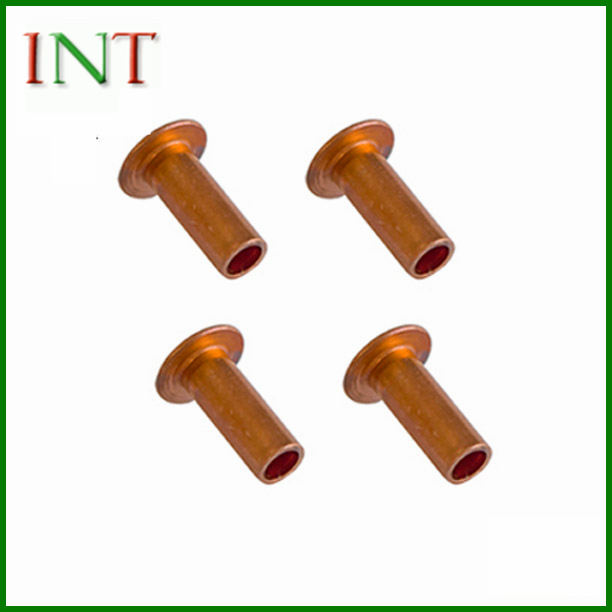Characteristics and uses of copper tubular rivets
2023-11-16
A copper tubular rivet is a type of fastener that consists of a cylindrical shaft, typically made of copper, with a head on one end. Rivets are used to join two or more materials together by passing the shaft through pre-drilled holes and then forming a second head on the opposite end, creating a permanent connection. Here are some key characteristics and uses of copper tubular rivets:
1. Material:
- Copper: Copper is a commonly used material for tubular rivets due to its excellent conductivity, corrosion resistance, and malleability.
2. Structure:
- Cylindrical Shaft: The main body of the rivet is a tubular or cylindrical shaft that passes through the materials being joined.
- Head: One end of the rivet has a formed head, which can take various shapes, such as a flat head or a rounded head.
3. Installation:
- Cold-Forming Process: Copper tubular rivets are often installed using a cold-forming process. This involves inserting the rivet into pre-drilled holes and then deforming or upsetting the end to create a second head, securing the materials in place.
4. Uses and Applications:
- Electrical Connections: Copper's conductivity makes it suitable for use in electrical connections, where a reliable and conductive joint is essential.
- Fastening Sheet Metal: Copper tubular rivets are commonly used in sheet metal applications for joining thin metal components.
5. Advantages:
- Conductivity: Copper rivets are ideal for applications where electrical conductivity is important.
- Corrosion Resistance: Copper is resistant to corrosion, making it suitable for use in various environments.
6. Variations:
- Solid vs. Hollow: Tubular rivets can be solid or hollow. Hollow rivets are lighter and are often used in applications where weight is a consideration.
7. Sizes and Dimensions:
- Varied Sizes: Copper tubular rivets are available in different sizes and lengths to accommodate various applications and material thicknesses.
8. Surface Finish:
- Surface Treatment: Depending on the application, copper tubular rivets may undergo surface treatments such as plating to enhance their appearance or corrosion resistance.
9. Application Tools:
- Rivet Tools: Specialized tools, such as rivet setters or rivet guns, are often used to install tubular rivets efficiently.
Copper tubular rivets find application in a range of industries, including electronics, automotive, construction, and metalworking. They are chosen for their conductivity, corrosion resistance, and the ability to create secure and durable connections. The specific design and dimensions of the rivet depend on the requirements of the application and the materials being joined.



